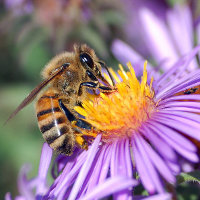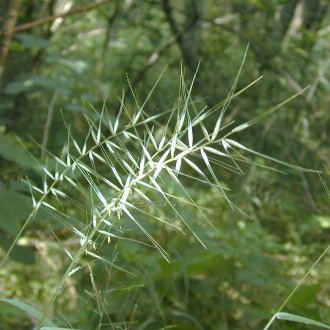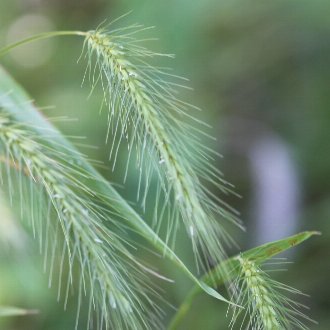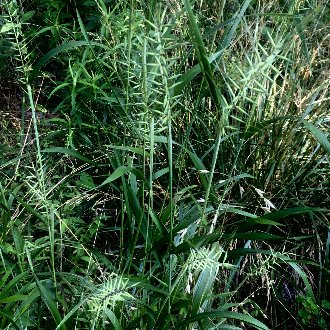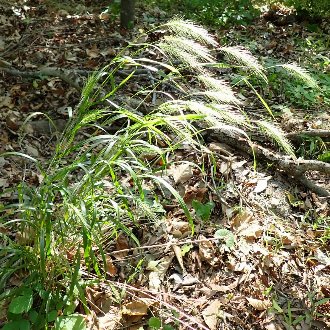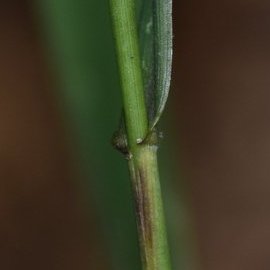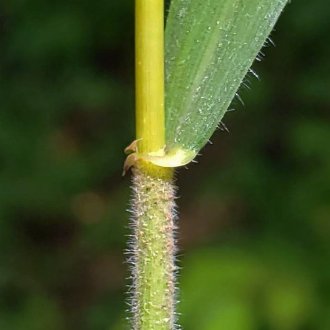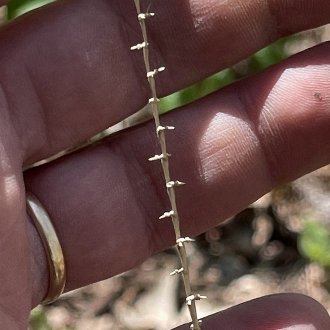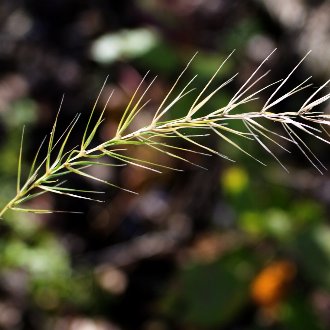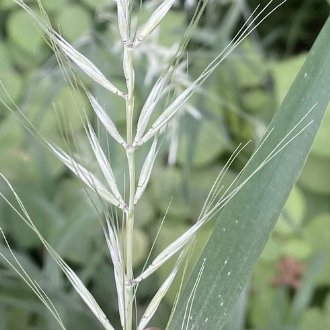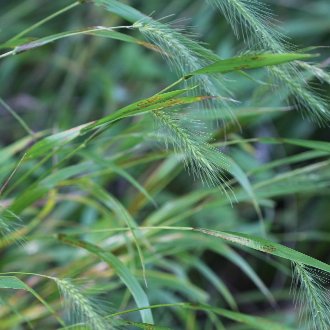Eastern Bottlebrush Grass vs Silky Wild Rye
These species are sometimes confused, as both are among the earlier Elymus species both to bloom and distribute their seeds, their habitats largely overlap, and both are widely used in ecological restoration projects and occasionally in gardens. They are easy to tell apart by their spikes, and can usually be distinguished by foliage too. E. villosus ranges farther west and slightly farther south, whereas E. hystrix ranges farther north and tolerates more shade and more ground-level competition, but requires more leaf litter in the soil.
Eastern Bottlebrush Grass (Elymus hystrix) | Silky Wild Rye (Elymus villosus) |
A large perennial, cool-season grass native to forests of eastern North America, named for the distinct bottlebrush shape of its spike. | A perennial, cool-season bunchgrass native to eastern to central North America. |
Spikes are upright, usually only slightly leaning, with spikelets spaced out farther along the central stem, usually projecting more perpendicularly outward. Photo © Jens-Christian Svenning, CC BY 4.0. | Spikes are drooping, with spikelets more closely spaced, and angled forward in the direction of the spike. Photo © lazarus, CC BY 4.0. |
Plants average taller, commonly to about 5 feet in height. Photo © Susan Dean Thomas, CC BY 4.0. | Although plants may reach similar heights, they are usually shorter, to about 3 and a half feet, only occasionally taller. Photo © Sus scrofa, CC BY 4.0. |
Sheaths are usually hairless. Upper surfaces of leaves are often rough to the touch; when covered in soft hairs, hairs are less dense, but are longer. Photo © Blake Bringhurst, CC BY 4.0. | Sheaths are usually pubescent, covered in long hairs. Upper surface of leaves are densely covered in fine hairs and are silky soft to the touch. Photo © aarongunnar, CC BY 4.0. |
When seeds are distributed, the entire spikelet comes off, leaving only the central stem of each spike, with a short stub at each node. Photo © Summit Metro Parks, CC BY 4.0. | When seeds are distributed, the glumes and attached awns remain attached to the central stem, leaving the spike to still have rows of awns even after all seeds are gone. Photo © aarongunnar, CC BY 4.0. |
Plants average a more bluish hue, especially in the spikes. Plants are occasionally glaucous (pale bluish and waxy), particularly in the spikes and sometimes lower down too. Photo © Sam Kieschnick, CC BY 4.0. | Plants average a deeper green color, with a relatively more yellowish hue, and are not glaucous. Photo © lazarus, CC BY 4.0. |
References & External Resources
These short lists show only links helpful for ID. For a complete list of references and resources also covering other aspects of ecology, visit the links section of the full article on each plant, which is the first entry here.

